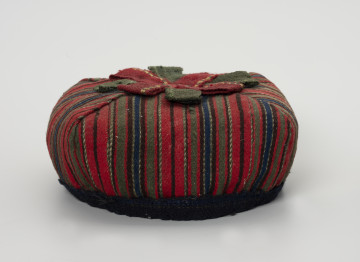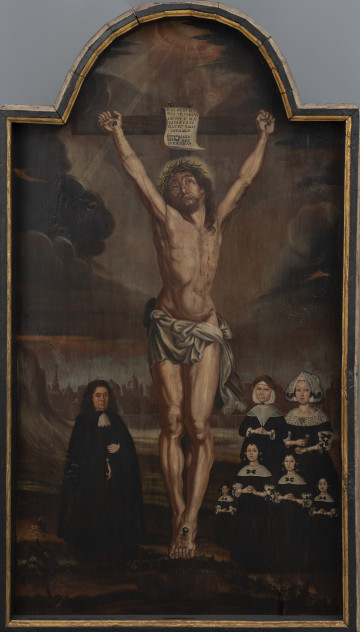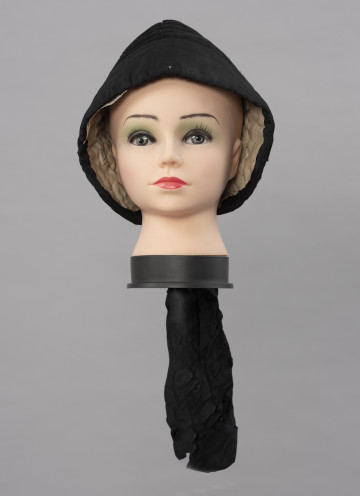
Men's hat
1850 — 1900
National Museum in Szczecin
Part of the collection: Material culture of West Pomerania
One of the areas on the German island of Rügen that has longest preserved its traditional way of life was the fishing enclave located on the geographically isolated peninsula of Mönchgut. Along with the fishing and building artefacts, also men’s and women’s attire, worn until the first half of the 20th century, has been preserved. According to sources, the last man wearing a variation of the Rugian folk costume from Mönchgut died in 1955 in Göhren. A typical fisherman from the Mönchgut peninsula would wear a white shirt, two pairs of trousers - in winter, navy blue woollen trousers underneath and linen canvas on top, and in summer, two pairs of linen trousers and a waistcoat. He wore a kerchief under his neck, knitted stockings of grey sheep's wool on his legs, supported by garters ending in pompons coming out from under his trousers, wooden shoes and, starting from the second half of the 19th century, a knitted cap with a pompon on his head. Trousers and waistcoats were among the interesting and distinctive elements of this garment. The trousers were sewn from four parts of thick, white sailcloth. Their legs were wide, measuring about 60 cm in cross-section, and ended well above the ankles. The waistcoat, a garment already known in the second half of the 17th century, was adapted to folk costumes in the 19th century, resembling the style worn in the 18th century. The presented waistcoat from the Rügen folk costume typical of Mönchgut was made of woven fabric, most likely woven on handlooms still, in a colourful striped pattern. The front is cut into an interesting style with a high collar, large lapels, and inset pockets decorated with golden- coloured brass buttons. Sewn from dark linen, the back has been fitted with a strap for adjusting the width. Iwona Karwowska
Author / creator
Object type
waistcoat, menswear
Technique
hand sewing, machine sewing
Material
flax canvas, brass buttons, wool fabric
Origin / acquisition method
acquisition
Creation time / dating
Creation / finding place
Owner
Muzeum Narodowe w Szczecinie
Identification number
Location / status

1850 — 1900
National Museum in Szczecin

circa 1650 — 1700
National Museum in Szczecin

1850 — 1900
National Museum in Szczecin
DISCOVER this TOPIC
National Museum in Lublin
DISCOVER this PATH
Educational path